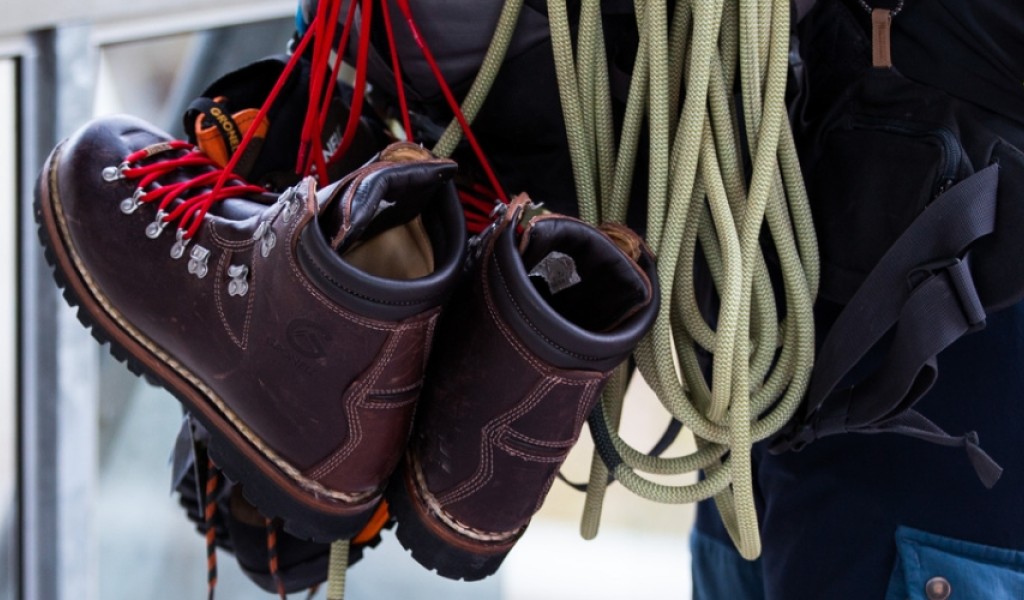Reading time: 6 minutes
It’s Sunday morning. You just got to your destination: you get off the car, you put your shoes on, you grab your backpack and… “Oh no! I knew I forgot something!”
It happens to you often, doesn't it? You always try and think of any possible thing you should bring with you for a day out on the mountains - and you always end up forgetting the most obvious and basic ones.
This is why we came up with this guide: our “checklist” of what to bring with you when you go hiking, in order to prepare the perfect trekking backpack and enjoy your day completely carefree!
- Sunscreen
People often think that putting sunscreen on before leaving is enough to protect their skin during the day; but skin absorbs sunscreen quickly, which, combined with sweat and weather, makes its effect vanish in a few hours.
We recommend to apply it every 2 or 3 hours, in order not to lose its protective effect. - Sugar, energy bars, magnesium and potassium
Low blood sugar, pressure drops, fatigue and cramps are common accidents during outdoor activities - most of all on the mountains, where the air, the environment and the kind of physical activity are much different from the ones we are used to. This is why you should always put in your trekking backpack: chocolate or sugary foods, as an immediate source of energy; a banana, rich in potassium, against cramps and muscular fatigue; energy bars, to restore the energy you lose during the activity; packs of magnesium, most of all in warmer seasons, to replace fluids and recover from pressure drops and faints. - Sunglasses and a hat (or a bandana)
Never, never underestimate mountain sun! In the summer, we are used to take something to protect our eyes and our head with us, but in colder seasons we never think about it: at high altitudes, sun is not only stronger than in other environments (the air is cleaner and filters sun rays less, and the altitude brings us “closer” to their source), but it also gets reflected and scattered by the snow, which increases its brightness and its harmful effect. - Spare t-shirts and tank tops
Two essential things to put in your trekking backpack: while walking, the perceived temperature is higher than the effective one, and direct sun immediately makes you feel warmer; but as soon as you stop, it is very important to change your sweaty clothes with clean and dry ones, in order to prevent mountain breeze and perceived temperature changes from causing any disease. - A rope and a pocket knife
Two small tools that can really get you out of any kind of trouble: from broken backpacks to loose threads, up to the most unexpected accidents, they can prove to be your best allies to live your trekking day without a hitch. - A cap, a scarf and a windproof jacket
Some clothes should never be missing from your backpack, not even in spring or summer: on the mountains, temperature changes very quickly - not just when the sun goes down: even a few clouds can make temperature drop in the blink of an eye. In addition, cold wind is not uncommon, even in the best weather: not to be prepared could lead to several health diseases. - A basic first aid kit
For those who do not have a commercial first aid kit, there are some tools that always should be put in your backpack, in order to face any kind of injury or small accident: a sanitizer, a bandage, a bite stick, antiseptic gauzes, plasters, blister plasters, a needle, a lighter (fire is perfect to sterilize iron and steel tools, in case of need). - A tweezer
A universal and essential life-saver: not only to remove wood splinters and pebbles or to clean wounds, but also to remove ticks, in case you find them along the way and they attach to your skin.
Do you know how to remove a tick? You absolutely must not pull it out, not to risk its head gets stuck under your skin and causes infection; you have to grab it with a tweezer and gently rotate it, paying attention to pull the head out along with the body (and then sterilize the area). - A K-Way
As we already mentioned, mountain weather can change very quickly: from a light rain to a full-blown summer storm, it is always better to be ready to shelter from the rain, in case it surprises you during your trekking day. - Lots of water
To bring just a small bottle of water with you for fear that your backpack may be too heavy is a mistake you should absolutely avoid to make: on the mountains, you do not often find fountains or drinking water along the way, and sweat and burned energies always leave you thirstier than you expect. - Insect repellent
Insect repellent is not only useful against mosquitoes: in the nature, you can find many harmful and annoying kinds of insects, most of all in the warmest and driest seasons, and spraying it all over your body helps preventing bites and ticks. - A change of shoes (to leave in the car)
At the end of your walk, you should always change your shoes, possibly with lighter, softer and more comfortable ones: you keet your feet locked for a long time into a pair of mountain shoes, which are by definition rigid, structured and not breathable; this is why they need a pair of lightweight shoes, to allow them to breathe and move free. - High socks (above the calf)
Most of all when you go hiking in short trousers (but also to be considered when in long trousers), wearing above the calf high socks is very important: they keep your legs safe from nettles and stinging plants, which are very frequent on mountain tracks - and very annoying as well. - Nylon bags
Always bring a couple nylon bags with you: one for trash and food leftovers, like banana peels or apple cores, and one for sweaty and wet clothes, in order not to put them in your backpack and risk to dirty or ruin something. - Thick socks or anti-blister bandages
Words “better safe than sorry” never fitted better: wearing thick socks specifically made for blisters (there are many types designed for mountain shoes on the market) or applying anti-blister adhesive bandages are great ways to avoid them, and to enjoy your trekking day without any kind of pain!
Are you looking for lightweight mountain shoes that are suitable for trekking in every season?
Take a look at our Backpacking line →
Take a look at our Instagram and Facebook, and join our Gronell family!

